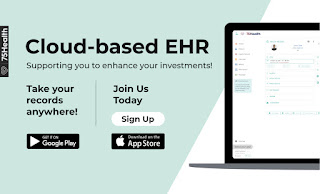EHR Software Eases Documentation Burdens
Healthcare
systems have digitally evolved as a trending topic in today’s customization. EHR Software
unfolds numerous benefits for better care coordination and accessibility. The in-app
messaging tool is used for communication with providers, physicians and
patients. Also used to send and receive confidential health records across
country borders and boundaries.
EHR Software Improves Clinical
Documentation
EHR Software offers several benefits but improving the quality
and utility of clinical documentation is best one. The tool can be used for enhancing
the documentation standards.
Benefits
EHR
documentation enables quick access to patient records for more coordinated
care.
EHR
documentation improves the billing and coding process effectively.
It
provides accurate and updated patient's health information during the time of
care.
It
enables secure health data sharing between providers and healthcare settings.
EHR
documentation helps providers to reduce medical errors and provide quality
care.
It
enhances the privacy and security of patient health information.
Clinical
documentation supports patient care, improves clinical outcomes, and enhances
interprofessional communication. When you document your assessments, plans, and
actions, you rely on nursing practice standards, organizational policies,
meaningful use directives, and a variety of quality criteria.
Electronic Health Record Software support that documentation with data that help you
enhance patient safety, evaluate care quality, maximize efficiency, and measure
staffing needs.
Documentation
templates can play an important role in improving the efficiency of data
collection, ensuring all relevant elements are collected in a structured
format. Templates may not exist for a specific problem or visit type. This
issue can occur if the structure of the note is not a good clinical fit and
does not accurately reflect the patient's condition and services.
The
documentation integrity may get affected when the wrong information is
documented on the wrong patient health record. Errors in patient identification
can affect clinical decision-making and patient safety, impact a patient's
privacy and security, and result in duplicate testing and increased costs to
patients, providers, and payers.
Organizations
must have a patient identity integrity program that includes performance
improvement measurements that monitor the percentage of error rates and
duplicate records within their electronic master patient index.
EHR Software has customizable documentation applications that
permit the utilization of templates to help with documentation. Unless these
EHR implementation tools are used correctly, the integrity of the data may be
questioned and even perceived as fraudulent activity.
So
to resolve this, the healthcare providers must understand the importance of
reviewing and editing all defaulted data to ensure that only patient-specific
data for that visit is recorded, while all other irrelevant data pulled in by
the default template is taken out.




Comments
Post a Comment